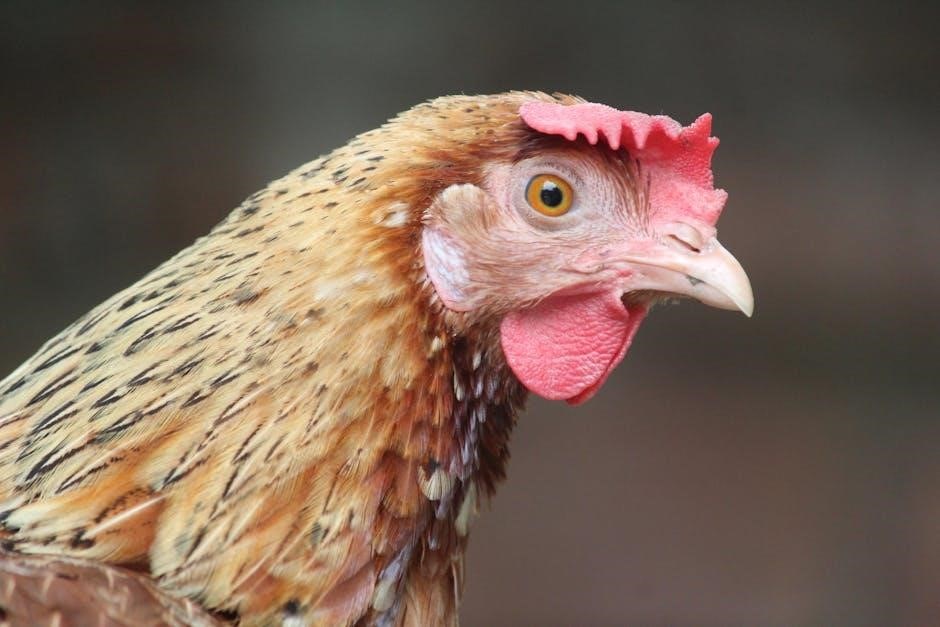Grady Hendrix’s 2020 novel, The Southern Book Clubs Guide to Slaying Vampires, blends horror and humor, following Patricia Campbell and her book club as they confront a vampire threat in 1990s South Carolina, exploring themes of female empowerment and societal norms.
1.1 Overview of the Novel
The Southern Book Clubs Guide to Slaying Vampires is a blend of horror, humor, and Southern Gothic, set in the 1990s. It follows Patricia Campbell, a housewife, and her unconventional book club, which focuses on true crime and murder mysteries. When a mysterious stranger, James Harris, arrives, the women uncover his dark secret: he’s a vampire. The novel explores themes of female empowerment, societal norms, and the duality of horror—both supernatural and everyday life—through its engaging and atmospheric storytelling.
1.2 Author Background: Grady Hendrix
Grady Hendrix is an American author known for blending horror and humor in his works. He gained recognition with novels like Horrorstör and My Best Friend’s Exorcism. Hendrix’s writing often explores themes of friendship, societal pressures, and supernatural elements, reflecting his deep understanding of both horror tropes and human dynamics. His unique style has earned him a loyal following and critical acclaim, with The Southern Book Clubs Guide to Slaying Vampires being a standout in his bibliography.
1.3 Publication Details
Grady Hendrix’s The Southern Book Clubs Guide to Slaying Vampires was published on April 7, 2020, by Quirk Books. It was named an Amazon Best Book of April 2020, highlighting its success. The novel is also available as an audiobook, narrated by Bahni Turpin,

Plot Summary
The story revolves around Patricia Campbell and her book club as they uncover a vampire threat in their suburban community, blending horror and humor with a female-led fight for survival in 1990s South Carolina.
2.1 Setting: The Deep American South in the 80s-90s
The novel is set in the deep American South during the 1980s and 1990s, capturing the essence of suburban life, racial divides, and societal norms of the era. The setting reflects both the charm and the challenges of Southern culture, providing a vivid backdrop for the story’s blend of horror and social commentary. The time period influences the characters’ beliefs and actions, creating a unique atmosphere that shapes the plot’s progression and themes.
2.2 Main Characters: Patricia Campbell and James Harris
Patricia Campbell is a Southern housewife feeling trapped in her mundane life, seeking escape through her book club. Her world is disrupted by James Harris, a charming new neighbor with a dark secret. Patricia’s journey from passivity to empowerment is central to the story, while James, a vampire, represents both allure and danger. Their dynamic drives the plot, exploring themes of transformation and societal expectations, as Patricia confronts the horrors of her reality and the supernatural threat James embodies.
2.3 The Central Conflict: A Vampire in Suburbia
The central conflict revolves around James Harris, a mysterious and handsome stranger revealed to be a vampire preying on the community’s children. Patricia Campbell and her book club must confront this supernatural threat, navigating both the horrors of vampirism and the stifling societal norms of their suburban lives. The conflict escalates as the women uncover the truth, challenging their own realities and banding together to protect their families and community, blending supernatural horror with the everyday struggles of their tightly controlled world.
Key Themes
The novel explores female empowerment, social commentary on Southern life, and the dual horror of vampirism and everyday struggles, blending supernatural terror with societal critiques.
3.1 Female Empowerment and Friendship
The novel highlights Patricia Campbell’s transformation from a submissive housewife to a courageous leader, emphasizing the power of female solidarity. The book club serves as a catalyst, uniting women who challenge patriarchal norms and societal expectations. Through their collective struggle against the vampire, the women discover their resilience and strength, fostering deep friendships and personal growth. This theme underscores the idea that true empowerment arises from unity and supporting one another in the face of adversity.
3.2 Social Commentary on Southern Life
The novel critiques the social fabric of the Deep South, exposing racial tensions, gender roles, and class disparities. Set in the 80s-90s, it reflects the region’s charm and its darker underbelly. The vampire threat mirrors societal ills, with characters navigating polite facades and hidden prejudices. Hendrix portrays Southern life as a complex duality—where hospitality coexists with hypocrisy, and tradition often masks oppression. This commentary adds depth to the horror, making the setting as unsettling as the supernatural elements.
3.3 The Dual Horror of Vampires and Everyday Life
The novel masterfully intertwines supernatural horror with the mundane struggles of suburban life. While the vampire, James Harris, embodies a literal threat, the women of the book club face equally terrifying challenges in their daily lives—repressive marriages, societal expectations, and the trivialization of their concerns. This duality highlights how the horrors of reality can be as chilling as any monster, making the fight against both a testament to resilience and the power of female solidarity in the face of overwhelming odds.
The Book Club as a Symbol
The book club symbolizes female unity and empowerment, transforming from a casual gathering into a powerful force against both supernatural and societal threats, embodying resilience and solidarity.
4.1 The Role of the Book Club in the Story
The book club serves as the narrative’s catalyst, evolving from a casual gathering of housewives discussing true crime novels into an investigative force confronting the supernatural threat. Their shared passion for murder mysteries equips them with the skills to uncover the truth about James Harris. The club becomes a symbol of female solidarity, transforming from a social outlet into a united front against evil. Their collective determination drives the plot, showcasing their resourcefulness and resilience in the face of horror.
4.2 True Crime and Murder Mysteries as Inspiration
The book club’s focus on true crime and murder mysteries inadvertently prepares them for the real-life horror they face. Their discussions about serial killers and thrillers provide a framework for analyzing the strange occurrences linked to James Harris. This literary fascination becomes a practical tool, enabling the women to connect the dots between fiction and reality. Their knowledge of crime narratives equips them with a unique perspective to investigate and combat the supernatural threat in their community.
4.3 The Book Club as a Symbol of Unity
The book club emerges as a powerful symbol of unity, bringing together women from different walks of life. Initially bonded by their shared interest in true crime and murder mysteries, they find strength in their collective voice and determination. As they confront the supernatural threat, their unity deepens, transcending societal expectations and personal struggles. The club becomes a sanctuary of trust and solidarity, proving that even in the face of horror, female friendship and collaboration can prevail, offering hope and resilience in their small Southern community.
The Vampire: James Harris
James Harris is a unique vampire, differing from traditional depictions, who preys on children and embodies societal fears, making him a central antagonist in the novel.
5.1 A Unique Vampire: Beyond the Dracula Model
James Harris diverges from the classic Dracula archetype, presenting a modern, charming predator who infiltrates suburban life. His vampirism is both a literal and metaphorical representation of societal threats, blending psychological manipulation with supernatural horror. Unlike traditional vampires, Harris’s actions are subtly sinister, making him a compelling and terrifying figure in contemporary horror literature.
5.2 The Vampire as a Reflection of Societal Fears
James Harris embodies societal anxieties, representing predatory capitalism and toxic masculinity. His charm and manipulation mirror real-world fears of exploitation, emotional abuse, and the erosion of trust. By blending supernatural horror with relatable human struggles, Harris symbolizes the darker aspects of suburban life, making the vampire a metaphor for the unseen threats lurking within seemingly idyllic communities.
5.3 The Battle Between Good and Evil
The battle between good and evil in The Southern Book Clubs Guide to Slaying Vampires is both literal and metaphorical. Patricia Campbell and her book club embody resilience and unity, confronting the vampire James Harris, who symbolizes predatory forces preying on their community. The climax showcases their courage and resourcefulness, highlighting the triumph of collective strength over individual evil, while also reflecting broader societal struggles against oppression and deceit.
Character Development
Patricia Campbell evolves from a passive housewife to a determined leader, while Mrs. Greene and the book club members grow into empowered, united forces against evil.
6.1 Patricia Campbell’s Transformation
Patricia Campbell’s journey from a submissive housewife to a fearless leader is central to the novel. Initially overwhelmed by her husband’s absence and societal expectations, Patricia finds her voice through the book club. Her determination to protect her family and community drives her transformation. By confronting the vampire threat, she challenges gender roles and discovers inner strength, embodying female empowerment. Her growth reflects the broader theme of women reclaiming agency in a patriarchal society.
6.2 The Role of Mrs. Greene
Mrs. Greene emerges as a pivotal figure, offering wisdom and guidance to Patricia and the book club. Her mysterious past and deep understanding of the supernatural make her an invaluable ally in their fight against James Harris. Mrs. Greene’s influence helps unite the women, providing them with the courage and knowledge needed to confront the vampire threat. Her presence symbolizes resilience and experience, inspiring Patricia to embrace her newfound strength and leadership role.
6.3 The Growth of the Book Club Members
The book club members undergo significant personal growth as they confront the vampire threat. Initially bonded by their shared interest in true crime novels, they evolve from passive housewives to empowered fighters. Patricia leads the transformation, discovering her strength and independence. The group learns to rely on each other, breaking free from societal constraints and marital pressures. Their collective journey reflects themes of friendship and resilience, transforming them into a united force against both supernatural and everyday horrors.
The Climactic Battle
The book club confronts James Harris in a tense, violent showdown. Patricia leads the charge, showcasing her transformation from a passive housewife to a fearless leader, ensuring the vampire’s defeat at a high emotional cost.
7.1 The Showdown with James Harris
The climax features Patricia and the book club facing James Harris, a charismatic vampire preying on their community. United by their determination to protect their families, the women use their newfound strength and resourcefulness to confront him. The battle is intense, with Patricia emerging as a leader, symbolizing the power of female unity against both supernatural and societal evils, ultimately defeating the vampire but at a profound personal cost.
7.2 The Aftermath of the Battle
The aftermath of the battle leaves Patricia and the book club forever changed. The defeat of James Harris brings a mix of relief and grief, as the community grapples with the losses suffered. Patricia, now a symbol of resilience, must reconcile her newfound strength with the emotional scars of the ordeal. The book club, once a simple gathering, evolves into a testament to female solidarity, proving that even in the face of horror, unity and determination can prevail.
7.3 The Ending Twist and Its Implications
The novel concludes with Patricia’s transformative journey, leaving readers with a lingering sense of unease. The final twist hints at unresolved tension, as the vampire’s fate remains uncertain, raising questions about justice and sacrifice. The ending underscores the book’s themes of female resilience and societal expectations, leaving a lasting impact on readers. It also highlights the enduring power of friendship and the unspoken horrors of everyday life, blending horror and reality seamlessly.

Genre and Style
The Southern Book Clubs Guide to Slaying Vampires masterfully blends horror and humor, with a touch of Southern Gothic, creating a unique voice that captivates readers while exploring darker themes.
8.1 Horror and Vampire Literature
The Southern Book Clubs Guide to Slaying Vampires seamlessly blends traditional vampire lore with modern horror, offering a fresh take on the genre. By pitting a group of Southern housewives against a charismatic vampire, the novel subverts expectations, combining suspense with dark humor. The vampire, James Harris, represents both a supernatural threat and a metaphor for deeper societal fears. This unique approach makes the book a standout in contemporary horror and vampire literature.
8.2 Southern Gothic Elements
The Southern Book Clubs Guide to Slaying Vampires is deeply rooted in Southern Gothic traditions, capturing the atmospheric decay and social tensions of 1990s South Carolina. The novel explores themes of racial divides, small-town secrets, and the suffocating norms of Southern life. By blending the supernatural with the stark realities of domestic life, Hendrix crafts a narrative that reflects the genre’s focus on the darker side of human nature and societal decay, set against the backdrop of a seemingly idyllic suburban landscape.
8.3 The Blend of Humor and Horror
The Southern Book Clubs Guide to Slaying Vampires masterfully combines witty dialogue and absurd situations with chilling horror elements. Hendrix uses humor to highlight the absurdity of suburban life, while the vampire threat provides a darker, suspenseful undertone. This balance creates a unique reading experience, making the novel both entertaining and unsettling. The blend of genres appeals to a wide audience, offering more than just a typical horror story.

Reception and Reviews
The Southern Book Clubs Guide to Slaying Vampires received widespread critical acclaim for its unique blend of horror and humor. Tor.com praised its brutal yet satisfying narrative, while The AV Club highlighted its flashy, engaging action. Kirkus Reviews noted its incisive social commentary and strong character development. The novel was also an Amazon Best Book of April 2020, with USA Today awarding it 3.5 stars, commending its meaningful exploration of womens resilience and societal norms.
9.1 Critical Acclaim
The Southern Book Clubs Guide to Slaying Vampires earned high praise from critics for its original storytelling and vivid characters. Tor.com described it as a “brutal book” with a “happy ending at a high cost,” while The AV Club noted its “flashy and engaging” action, though it felt “hollow at its heart.” Kirkus Reviews awarded it a starred review, highlighting its sharp social commentary and character depth. The novel was also named an Amazon Best Book of April 2020, showcasing its broad appeal and critical success.
9.2 Reader Responses and Popularity
Readers embraced The Southern Book Clubs Guide to Slaying Vampires for its unique blend of horror, humor, and relatable characters. The novel became an Amazon Best Book of April 2020, resonating with fans of vampire fiction and Southern Gothic stories. Many praised its strong female leads and the exploration of friendship and societal challenges. The book’s ability to balance lighthearted moments with darker themes appealed to a wide audience, making it a standout in modern horror literature and a favorite among book clubs and casual readers alike.
9.3 Comparisons to Other Works (e.g., Steel Magnolias, Dracula)
The Southern Book Clubs Guide to Slaying Vampires has been likened to Steel Magnolias for its portrayal of strong Southern women and their unbreakable bonds, while its vampire elements draw comparisons to Dracula. Critics note how Hendrix modernizes the vampire lore, blending it with the charm of Southern Gothic storytelling. This unique fusion creates a narrative that feels both familiar and fresh, appealing to fans of classic literature and contemporary horror alike, and solidifying its place in both genres.

Adaptations and Spin-offs
The Southern Book Clubs Guide to Slaying Vampires is being adapted into an HBO comedy series, with Grady Hendrix involved in its creation. An audiobook version, narrated by Bahni Turpin, is also available, bringing the story to life for listeners.
10.1 The HBO Comedy Series Adaptation
A comedy series based on The Southern Book Clubs Guide to Slaying Vampires is in development at HBO. Grady Hendrix is involved in writing the adaptation, which promises to bring the novels unique blend of humor and horror to the screen. The series, moving from Amazon to HBO, follows the story of Patricia Campbell and her book club as they confront a vampire threat in their suburban community. While no release date has been announced, the adaptation is highly anticipated by fans of the novel and horror enthusiasts alike.
10.2 Audiobook Version and Narration
The audiobook version of The Southern Book Clubs Guide to Slaying Vampires is narrated by Bahni Turpin, whose engaging voice brings depth to the characters and enhances the novels Southern Gothic atmosphere. Turpins narration seamlessly balances the books humor and horror, capturing the essence of Patricia Campbells journey and the dynamics of the book club. The audiobook has been well-received for its immersive storytelling, making it a popular choice for fans of both horror and Southern fiction. Turpins performance adds a layer of authenticity to the narrative, enriching the listener’s experience.
The Book’s Cultural Impact
The Southern Book Clubs Guide to Slaying Vampires has left a lasting impact on vampire literature, redefining the genre while showcasing Southern culture and societal dynamics through its unique narrative.
11.1 Influence on Vampire Literature
Grady Hendrix’s novel has redefined vampire lore with its unique twist, blending horror and humor while addressing societal issues. By deviating from traditional vampire tropes, the book offers a fresh perspective, making it a standout in the genre. Its success has inspired new approaches to vampire storytelling, encouraging authors to explore beyond classic narratives. The novel’s ability to merge Southern Gothic elements with vampire horror has set a new standard, influencing modern vampire literature with its original voice and cultural depth.
11.2 Representation of Southern Culture
The novel vividly portrays the Deep South in the 80s-90s, capturing its unique cultural landscape. It explores the social dynamics of suburban communities, racial divides, and the challenges faced by women. The book’s setting reflects the era’s cultural nuances, blending Southern Gothic elements with vampire horror. Hendrix’s portrayal of Southern life resonates deeply, offering a fresh perspective on the region’s complexities and traditions, while maintaining a balance between humor and the darker aspects of societal norms.
11.3 The Novel’s Place in Modern Horror
The Southern Book Clubs Guide to Slaying Vampires revitalizes vampire lore by blending Southern Gothic elements with modern horror. Its fusion of humor and terror, along with a strong focus on female empowerment, sets it apart in contemporary horror. The book’s ability to address societal issues through a supernatural lens has made it a standout, appealing to a wide audience and solidifying its place in the evolution of horror literature.

Reading Guide and Discussion Questions
A comprehensive guide for book clubs, featuring discussion questions, themes, and character analysis, helping readers delve into the novel’s blend of horror, humor, and societal commentary.
12;1 Book Club Discussion Topics
Key topics include the dual horror of vampires and everyday life, the role of female friendship, and the blending of humor with horror. Discuss Patricia’s transformation, the symbolism of the book club, and the societal commentary on Southern culture. Explore how the novel challenges traditional vampire lore and the impact of its 90s setting. Analyze the moral dilemmas faced by characters and the balance between supernatural and real-world fears. These themes offer rich material for thought-provoking conversations.
12.2 Themes for Further Exploration
Themes for deeper exploration include the societal fears reflected in the vampire, the Southern Gothic elements, and the portrayal of family dynamics. Analyze the blending of horror and humor, the critique of patriarchal norms, and the empowerment of women through friendship. Explore the symbolism of the vampire as a metaphor for real-world dangers and the impact of the 1990s setting on the narrative. These themes offer a rich foundation for examining the novel’s depth and resonance.
12.3 Recommended Reading List from the Author
Grady Hendrix recommends books that blend true crime and horror, such as Ann Rule’s Helter Skelter and Gillian Flynn’s Gone Girl. He also suggests classic vampire tales like Bram Stoker’s Dracula for context. His bonus features include an annotated true-crime reading list, reflecting the book club’s obsession. These works highlight the dark, suspenseful narratives that inspired his unique storytelling style in The Southern Book Clubs Guide to Slaying Vampires.
The Southern Book Clubs Guide to Slaying Vampires masterfully blends horror and Southern charm, leaving readers with a lingering appreciation for its bold storytelling and strong female characters.
13.1 Final Thoughts on the Novel
The Southern Book Clubs Guide to Slaying Vampires is a captivating blend of horror and Southern charm, offering a fresh take on vampire lore. With its strong female leads and exploration of societal norms, the novel delivers both entertainment and depth. Patricia Campbell’s journey from a passive housewife to a fearless leader highlights themes of empowerment and unity. The book’s legacy lies in its ability to balance humor with darkness, leaving readers with a memorable and impactful story that resonates long after the final page.
13.2 The Legacy of The Southern Book Clubs Guide to Slaying Vampires
The Southern Book Clubs Guide to Slaying Vampires has left an indelible mark on contemporary horror, redefining vampire lore with its unique blend of Southern Gothic and humor. Its influence extends beyond the genre, appealing to a wide audience with its rich characters and social commentary. The novel’s legacy lies in its fresh take on horror, making it a standout in modern literature.



